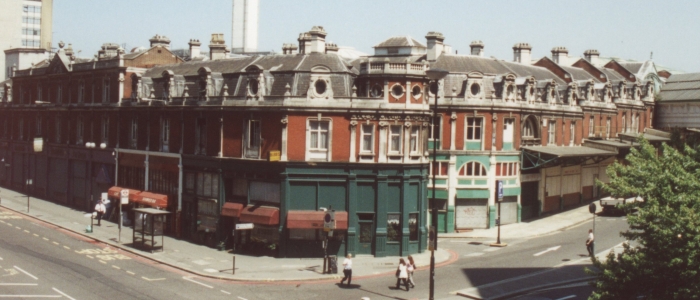
Smithfield General Market
Campaigning guide
 By Rhiannon Wicks
Published 26 February, 2013
By Rhiannon Wicks
Published 26 February, 2013
SAVE campaigns for the preservation and reuse of a wide range of historic buildings. Current major campaigns include trying to prevent demolition of the Victorian Welsh Streets in Liverpool under the Pathfinder programme, enacting a rescue package for Winstanley Hall, a 500-year-old country house outside Wigan, and campaigning for the preservation and reuse of Smithfield General Market on the edge of the City of London which will be gutted if a pending application for a bland office block development is given permission.
As well as mounting campaigns we object to harmful planning applications which affect historic buildings, both listed and unlisted, which involve demolition, both complete and partial, and/or substantial harmful change. We are always interested to hear from people about such applications and can write to a local planning authority to register an objection. Please try to contact us as far in advance of deadline for comments and definitely before the council’s planning committee meet. There is nothing we can do unfortunately if an application has already been given permission other than to note it as a scandal. It is helpful to give us as much information as possible when contacting us about a threatened building. If there is a pending application please give us the planning reference if you have it and any photographs are useful too. We are a small busy organisation so anything that saves us time is very welcome! If an application involves alterations to a historic building, either exterior or interior, but does not involve any demolition then it is advisable for people to contact one of the national amenity societies and their local conservation officer for guidance on what steps can be taken to help ensure the character of the building is not harmed.
SAVE is an independent charity and one of the things we do is champion Britain’s unsung heritage and this includes unlisted buildings not in a conservation area. Unfortunately, there is no statutory protection for these buildings but it can be worth putting the building in question forward as a candidate for the local council’s local list of buildings of historic and architectural importance if such a list exists. If one does not, then it could be worth lobbying the council to create one. Although inclusion on such a list does not give a building any protection in the planning process it does serve as recognition of its local importance. Also, if a building is on the edge of a conservation area it can sometimes be possible to have the conservation area boundary extended. Councils are responsible for designating and extending conservation areas so speak to your local conservation officer about this for advice if you think this is an option.
Local media can be very powerful so it is a good idea to build up a book of local contacts and nurture relationships with key contacts. Inclusion in local newspapers and publicity on local radio can be incredibly valuable for spreading news about your campaign and building support. Send out press releases to targeted audiences when you have a piece of news to announce and organise photo calls. Pictures can speak a thousand words so make sure you have excellent photos of your building.
Do enlist the local civic society, if there is an active one, and if there isn’t, consider creating one and also make contact with any local residents’ or history groups. The more support you can drum up for your cause the better. Check out Civic Voice, the national membership body for civic societies to see if there is a society in your area.
If you wish to try to take on a building at risk think about setting up a building preservation trust or try make contact with one in your local area if there is one. The Association of Preservation Trusts (APT) has a list of BPTs and can provide advice on how to go about establishing a trust.
Do make friends with your local conservation officer. Their advice and support can be invaluable. If your local council has a Heritage Champion do arrange a meeting with them. Their role is to champion local heritage and ensure it is looked after in the best way possible. Ensure they do their job!
Social media is increasingly becoming a pivotal part of any campaign. The internet is your friend so make use of it! Use Twitter, Facebook and blogs to communicate with your supporters and keep them updated. SAVE has both a Twitter and Facebook account and it is a quick and easy way of delivering a message to a wide audience.
Petitions are a good idea. There are many online which are quick and simple to set up and to use. A link can be circulated via email, social media, blogs and websites. Recently SAVE has used change.org for the Smithfield General Market campaign and recommends it.
For more help and further information check out the Help and Advice pages on SAVE’s website. These give extensive guidance on how to run your own campaign to save an historic building and draws on over 40 years of campaigning by SAVE. These pages are a must for anyone trying to save an historic building and contain sections on:
Introduction: A SAVE Guide to running your own campaign to save an historic building
Forming an action group
The campaign
Use of the media
Local planners and Planning Applications
Getting a building spotlisted
Conservation area designation
Stopping the rot
Legal action
Sources of further help and advice
Links
Good luck and thank you for your interest in SAVE.